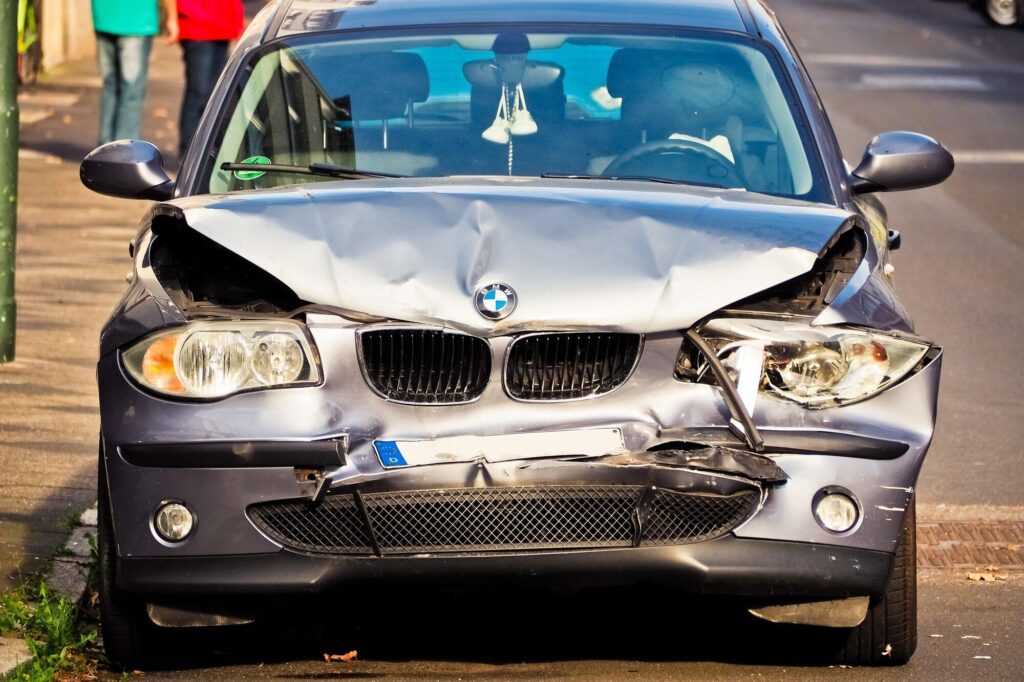Picture this: you’re in your car, stopped at a red light, when suddenly, bam! Another vehicle hits you from behind. Before you even have time to react, the other driver speeds off and disappears.
Your heart races. You’re left wondering, what just happened?
Unfortunately, this isn’t rare. Hit-and-run accidents happen every day, leaving victims confused and frustrated.
Whether the damage is minor or serious, it’s still considered a vehicle crash. The fleeing driver is breaking the law by leaving the scene.
This blog outlines smart steps to take if the other vehicle flees after a crash, helping you stay safe, gather evidence, and protect your legal rights.
Step One: Stay Safe and Check for Injuries
After the shock of the crash, your first priority should always be safety. Take a deep breath and assess the situation.
If you or anyone else in your car is hurt, call 911 right away. Even if you feel fine, it’s still a good idea to get checked by a medical professional. Some injuries, like whiplash or concussions, don’t show symptoms immediately.
If your car is blocking traffic and it’s safe to move, pull over to the side of the road. Turn on your hazard lights so other drivers can see you.
Avoid chasing after the fleeing vehicle, no matter how tempting it may be. That could put you and others in even more danger.
Step Two: Gather as Much Information as Possible
Once you’re safe, try to collect any details you can remember about the other vehicle. Even small pieces of information can help the police track it down later.
Write down or record notes on your phone, including:
- car’s make, model, and color
- car’s license plate number
- direction where the vehicle went
- any unique details
If there were any witnesses nearby, ask for their names and contact information. Their statements could be valuable evidence.
Also, look around to see if there are security cameras nearby. Gas stations, stores, or traffic lights often record useful footage that could identify the other driver.
Step Three: Call the Police and File a Report
Even if the damage seems small, always report a hit-and-run to law enforcement. A police report serves as an official record of the incident. This is essential for insurance claims and any possible legal action.
When the officers arrive, tell them exactly what happened, including any details you noted about the fleeing vehicle. Be honest about everything, even if you’re unsure about certain details. The more accurate your information, the better their chances of finding the other driver.
If the police can’t respond to the scene right away, you can still file a report later at a station or through an online system in your area. Be sure to get a copy of the report for your records. It’s a key document for your insurance company.
Step Four: Take Photos and Document Everything
While waiting for help, take photos of the accident scene and any visible damage. Include shots of your vehicle, the surrounding area, and any skid marks or debris.
Try to capture multiple angles and lighting conditions to give a clear picture of what happened. The more evidence you have, the easier it will be to prove your case later.
If you or your passengers have visible injuries, document those as well. Time-stamped photos and medical records can support your claim if you seek compensation for medical bills or other losses.
Step Five: Notify Your Insurance Company
After contacting the police, reach out to your insurance provider as soon as possible. Many companies have specific rules for reporting hit-and-run incidents.
Give them the details you collected, including the police report number and any photos. If you have uninsured motorist coverage, it may help pay for repairs and medical costs when the other driver can’t be identified.
Even if the other driver is later found, your insurance company can help handle communication and legal steps on your behalf.
Step Six: Seek Legal Guidance If Needed
Sometimes, a hit-and-run case gets complicated-especially if there are injuries, major damage, or disputes with insurance. In those cases, it’s wise to talk to a personal injury lawyer.
A legal professional can help you understand your options, handle negotiations, and make sure you receive fair compensation. Learning more about hit and run accidents can also prepare you for what to expect during the claims process.
Many attorneys offer free consultations, so it’s worth reaching out if you’re unsure about your next steps.
Why Hit-and-Run Drivers Flee the Scene
It’s easy to assume that anyone who drives away after a crash must be a terrible person. But there are several reasons drivers panic and run.
Understanding them doesn’t excuse their behavior. But it can help explain why hit-and-runs happen so often.
Some common reasons include:
- No insurance or valid license
- Fear of getting arrested
- Outstanding warrants or prior offenses
- Shock or panic
No matter the reason, leaving the scene of a vehicle crash is illegal. Those who do so can face serious penalties. This includes fines, license suspension, or even jail time once they’re caught.
How to Protect Yourself from Future Hit-and-Runs
While you can’t control how other drivers behave, there are ways to reduce your risk and prepare for the unexpected.
Here are a few simple habits to adopt:
- Install a dash cam
- Park in well-lit, visible areas
- Insurance is up to date
- Stay alert
Small steps like these can make a big difference if the worst happens.
The Bottom Line: Stay Calm, Stay Smart
A hit-and-run can leave you shaken and angry. But the most important thing is to stay calm and take action right away.
Protect yourself and others first. Then focus on gathering information, reporting the incident, and documenting everything.
Even if the other vehicle disappears, there are still ways to seek justice and recover your losses. With clear evidence, good records, and professional guidance, you’ll be in a stronger position to move forward.
Stay safe, drive carefully, and always know what to do – even when the unexpected happens.
For more road safety tips, check out our blog posts.






